Part 1: Introduction to Crate Training
1.1 Definition of Crate Training
Crate training is a method used to manage and train dogs, primarily focusing on puppies. It involves using a dog’s crate as a space where the dog spends time securely and comfortably. This technique is widely recognized in dog training circles for its effectiveness in establishing routines and providing a sense of security for dogs, especially young puppies. Crate training is essential for creating a safe and happy environment for your dog.
1.2 Why You Should Crate Train Your Dog
Understanding the importance of crate training is crucial for new dog owners. It’s not just about confining the dog; it’s about creating a positive association between the dog and its crate. This method is pivotal for situations where the dog needs to be transported or when the family spends time away from the family room. Crate training aids significantly in house training and helps in reducing separation anxiety in dogs. Puppy Potty Training offers a deeper insight into the importance of this training method.
1.3 Benefits of Crate Training
The benefits of crate training extend beyond mere convenience. An appropriately sized crate serves as a sanctuary for your dog, a place where your dog can retreat to and feel secure. It also simplifies the process of potty training, as it aligns with a dog’s natural instinct to avoid soiling their sleeping area. Moreover, it helps in establishing a feeding routine, as you can begin feeding your dog meals inside the crate, reinforcing a positive association. For a more comprehensive understanding of the benefits of crate training, refer to Benefits of Crate Training.
Part 2: Preparing for Crate Training
2.1 Choosing the Right Crate
Selecting the right crate is the first step in successful crate training. Most pet supply stores offer a variety of options, allowing you to choose a crate that is suitable for your dog’s age, size, and breed. An appropriately sized crate is crucial as it ensures the comfort and security of your dog. For more guidance on selecting the right crate, consider Selecting the Right Crate.
2.2 Setting up the Crate
Once the crate is chosen, setting it up properly is vital. Place it in an area where the family spends most of their time, like the family room, to avoid making your dog feel isolated. Include a comfortable bedding and a few treats to create a welcoming environment. The crate should be a pleasant space, encouraging your dog to enter willingly. For additional tips on crate setup, refer to Crate Setup Tips by Petfinder.
2.3 Introducing the Puppy to the Crate
Introducing the puppy to the new dog crate should be a gradual process. Use positive reinforcements like praise and treats to encourage your dog to enter the crate. This initial introduction is pivotal in building a positive association with the crate. Keep the crate door open initially, allowing your dog to explore it freely and become accustomed to it.
Part 3: Training the Puppy to Like the Crate
3.1 Creating a Positive Association
Creating a positive association is foundational in successful crate training. Utilizing praise, treats, and the dog’s favorite toy can foster a loving relationship between your dog and its crate. This method is essential as it ensures the dog perceives the crate as a rewarding and pleasant space. For more insights on creating positive associations with the crate, delve into Positive Crate Experiences by Cesar’s Way.
3.2 Establishing a Routine
Establishing a consistent and balanced routine is crucial in crate training. Regular feeding times, bathroom breaks, and periods of play and interaction form the backbone of a well-rounded routine. Maintaining consistency in these activities is vital as it aids in potty training and helps in mitigating anxiety in your dog. For a comprehensive guide on establishing a successful crate training routine, refer to Crate Training Routine.
3.3 Dealing with Whining
Effectively managing whining is a crucial aspect of crate training. Discerning between whining that stems from genuine need and attention-seeking whining is essential. Addressing the needs while ignoring attention-seeking whining and rewarding silence will reinforce quiet behavior.
3.4 Dog Crate Accessories
Incorporating appropriate dog crate accessories is essential in keeping your dog content and occupied. Providing comfortable bedding, a durable food dish, and chew toys can make the crate more appealing. These accessories play a significant role in reducing separation anxiety and keeping your dog occupied. For recommendations on essential crate accessories, consult Crate Accessories Guide by Chewy.
3.5 Gradual Introduction to the Crate
Introducing your dog to the crate should be a gradual and positive experience. Start by placing the food dish inside and allowing your dog to explore the crate without any pressure. Gradual introduction helps in building a sense of security and comfort around the crate. Encourage and reward every positive interaction with the crate to reinforce the positive association.
3.6 Monitoring Time Spent in the Crate
Monitoring and managing the amount of time your dog spends in the crate, especially for young puppies, is important. Ensuring your dog is not confined for extended periods is crucial to avoid any negative experiences associated with the crate. Balancing crate time with playtime and interaction is key in maintaining a positive crate training experience.
Part 4: Practical Steps for Positive Crate Association
4.1 Placing the Crate in a Common Area
Positioning the crate in a common area, like the family room, is essential. This ensures the dog feels included and avoids feelings of isolation. A common area fosters a sense of belonging and security within the family environment, making the dog feel more at home.
4.2 Making the Crate Comfortable
Creating a comfortable environment within the crate is pivotal. Adding soft bedding and the dog’s favorite toys makes the crate a cozy and inviting place. An inviting crate encourages the dog to spend time inside willingly, making it a positive association for the dog.
4.3 Introducing the Dog to the Crate
A gradual and positive introduction to the crate is essential. Allowing the dog to explore the crate without pressure and rewarding interaction with treats and praise builds a positive association. A positive introduction fosters willingness to enter the crate, helping in reducing separation anxiety in the long run.
4.4 Feeding Meals in the Crate
Feeding the dog’s regular meals in the crate is a practical step in crate training. This practice reinforces the positive association with the crate, making it a pleasant space for the dog. Consistent feeding within the crate solidifies the positive relationship with it, aiding in the overall training procedures outlined for crate training.
4.5 Practicing Short Crate Sessions
Starting with short sessions of closing the door while the dog is inside is crucial. Gradually increasing the duration as the dog becomes more comfortable prevents anxiety and fosters a sense of security within the crate. Short sessions are essential in building the dog’s confidence and comfort in the crate, allowing the dog to adapt gradually.
4.6 Extending Crate Time Gradually
Once the dog is comfortable with short sessions, it’s important to extend the crate time gradually. Starting with 10 minutes and working up to longer periods ensures the dog adapts progressively to extended crate times, avoiding any potential stress or anxiety for the dog.
4.7 Leaving the Dog in the Crate
When the dog is comfortable in the crate for about 30 minutes, start leaving the dog crated when you leave the house and at night. This step is vital in building the dog’s independence and confidence in staying alone in the crate, fostering a sense of security and reducing potential separation anxiety.
4.8 Avoiding Using the Crate as Punishment
It’s crucial never to use the crate as a place of punishment. This practice will create a negative association with the crate, undermining the positive relationship that has been built. For more insights on maintaining positivity in crate training, refer to Maintaining Crate Positivity by The Spruce Pets.
Part 5: Addressing Challenges in Crate Training
5.1 Managing Anxiety and Whining
Managing anxiety and whining is crucial in crate training. It’s essential to differentiate between whining due to need and attention-seeking whining. Ignoring attention-seeking whining and rewarding quiet behavior is key in training. For more insights on managing anxiety and whining, refer to Managing Anxiety in Dogs.
5.2 Dealing with Separation Anxiety
Addressing separation anxiety is vital for successful crate training. Creating a positive association with the crate and providing toys can help in reducing separation anxiety. It’s important to start with short periods in the crate and gradually increase the time as the dog becomes more comfortable. For a deeper understanding of dealing with separation anxiety, delve into Separation Anxiety Solutions.
5.3 Consistency in Training
Maintaining consistency in training procedures is pivotal. Consistency in routine, rewards, and dealing with unwanted behavior ensures the success of crate training. Regular feeding, bathroom breaks, and playtime help in forming a routine, making the dog feel secure and well-adjusted.
5.4 Addressing Accidents in the Crate
Addressing accidents in the crate promptly and effectively is essential. Cleaning the crate thoroughly and maintaining a regular bathroom schedule can prevent future accidents. It’s crucial to avoid punishing the dog as it can create a negative association with the crate.
Conclusion
Crate training is a multifaceted approach that requires patience, consistency, and a deep understanding of a dog’s needs and behaviors. The journey of getting a puppy to like its crate revolves around creating a positive, secure, and comfortable environment within the crate. By choosing an appropriately sized crate, placing it in a common area, and making it a pleasant space with comfortable bedding and favorite toys, owners can foster a loving relationship between the puppy and its crate.
The gradual introduction to the crate, coupled with positive reinforcement techniques such as treats, praise, and rewards, plays a pivotal role in building a positive association with the crate. Regular monitoring, adjustments, and addressing behavioral issues promptly and effectively are crucial in maintaining progress and ensuring the success of crate training. Balancing crate time with sufficient playtime, interaction, and regular exercise is essential in keeping the puppy content and well-adjusted.
Addressing challenges such as anxiety, whining, and separation anxiety requires discernment, understanding, and the implementation of effective strategies to manage and mitigate these issues. The crate should never be used as a form of punishment, and any negative association with the crate should be addressed immediately to maintain the crate as a positive and safe space.
In conclusion, crate training is not just about confining a puppy to a crate; it’s about creating a sanctuary for the puppy, a place where it feels secure, comfortable, and loved. It’s about building a trusting and loving relationship between the owner and the puppy, ensuring the well-being and happiness of the puppy throughout its life. By adhering to the principles and practices outlined in this article, dog owners can successfully crate train their puppies, making the crate a beloved space for their furry friends.
Frequently Asked Questions: How to Get Puppy to Like Crate
Q1: How can I make the crate a positive space for my puppy?
A: Make the crate comfortable with bedding and toys, feed meals inside the crate, and reward your puppy with treats and praise for entering the crate. Consistency and positive reinforcement are key.
Q2: How long should I crate my puppy during the day?
A: Puppies should not be crated for long periods during the day. Start with short intervals and gradually increase as the puppy becomes accustomed. Ensure regular breaks for play and bathroom needs.
Q3: Is it okay to use the crate as a form of punishment?
A: No, using the crate as punishment can create a negative association, making the puppy dislike the crate. The crate should always be a positive and safe space for your puppy.
Q4: What should I do if my puppy whines in the crate?
A: Initially, it’s important to differentiate between attention-seeking whining and whining due to genuine needs like bathroom breaks. Address the needs and ignore attention-seeking whining, rewarding quiet behavior.
Q5: How can I deal with separation anxiety in crate training?
A: Start with short periods in the crate and gradually increase the time. Providing toys and creating a positive association with the crate can help in reducing separation anxiety.
Q6: How can I ensure the success of crate training?
A: Consistency, patience, positive reinforcement, regular exercise, interaction, and addressing behavioral issues promptly are essential for the success the crate training process.
Q7: Can adult dogs be crate trained?
A: Yes, an older dog can be crate trained using the same principles of consistency, positive reinforcement, and gradual introduction, but it may require more patience as your adult dog may be acclimated to different behaviors.
Q8: Where should I place the crate?
A: The crate should be placed in a common area where the family spends time to avoid making the dog feel isolated and to foster a sense of belonging and security.
Q9: What should I do if my puppy has an accident in the crate?
A: Clean the crate thoroughly and maintain a regular bathroom schedule. Avoid punishing the puppy as it can create a negative association with the crate. Consider a smaller crate
Q10: How can I make my puppy feel more secure in the crate?
A: Providing comfortable bedding, favorite toys, and a piece of clothing with your scent can make the puppy feel more secure and comfortable in the crate.

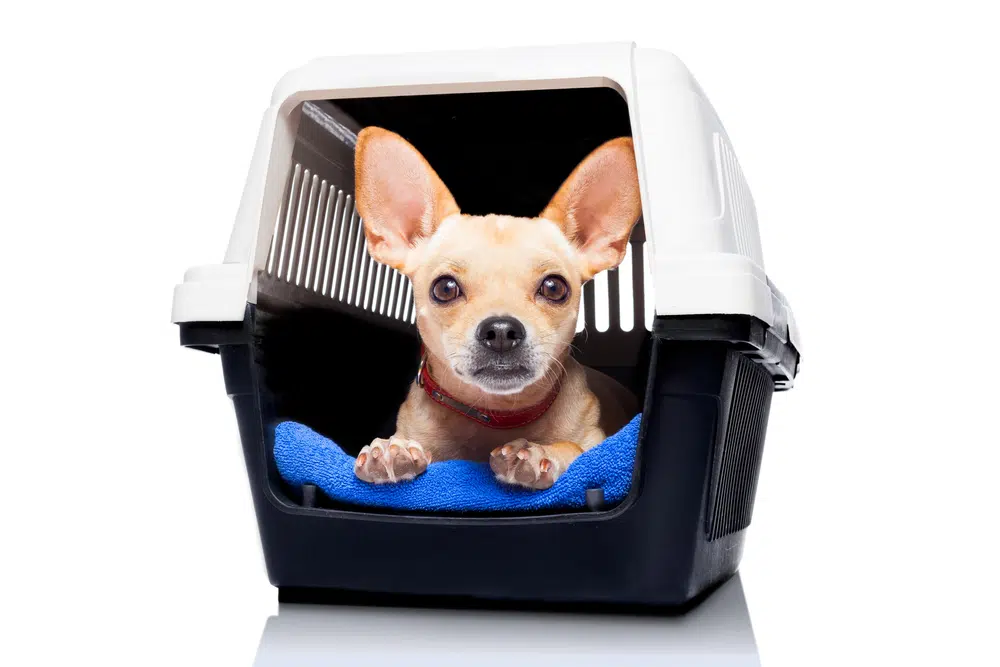


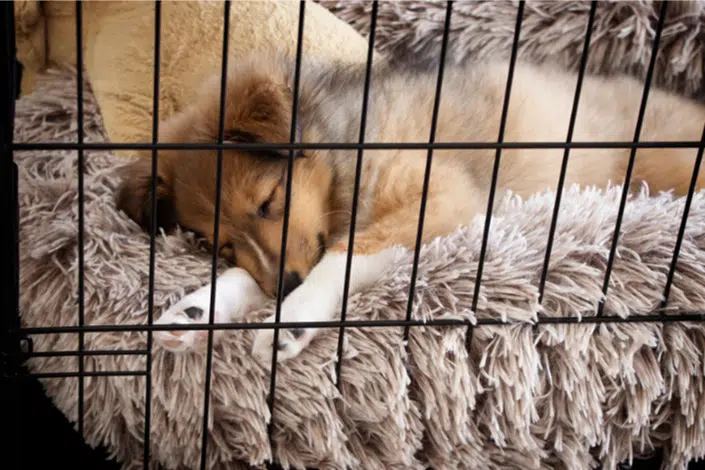
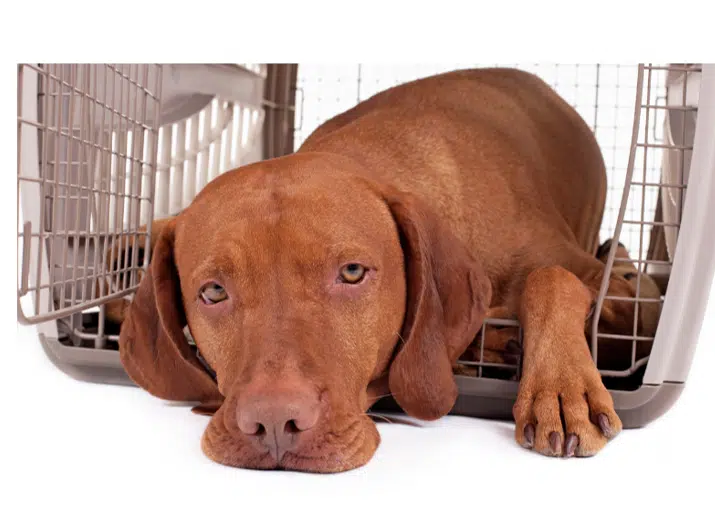

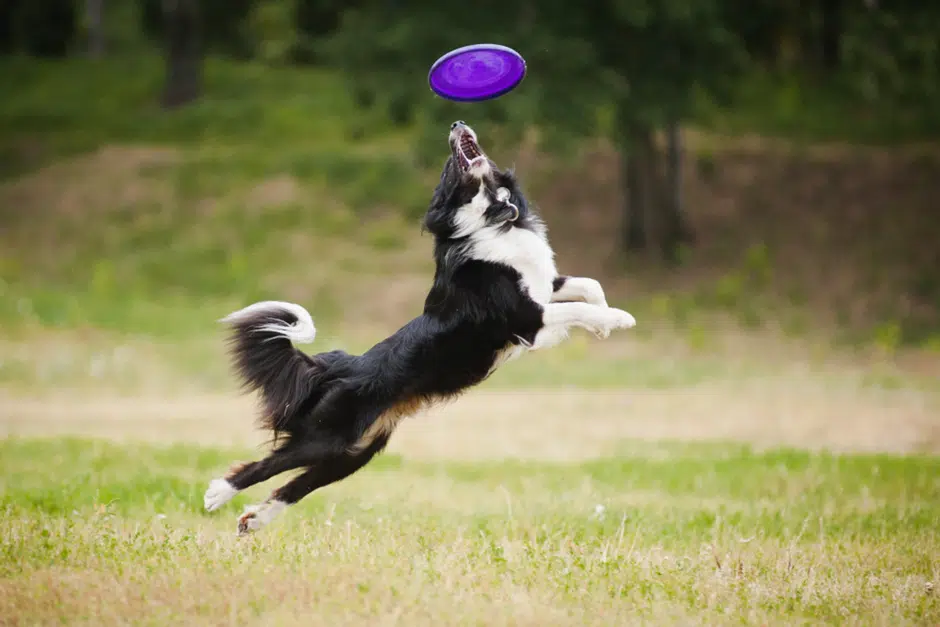
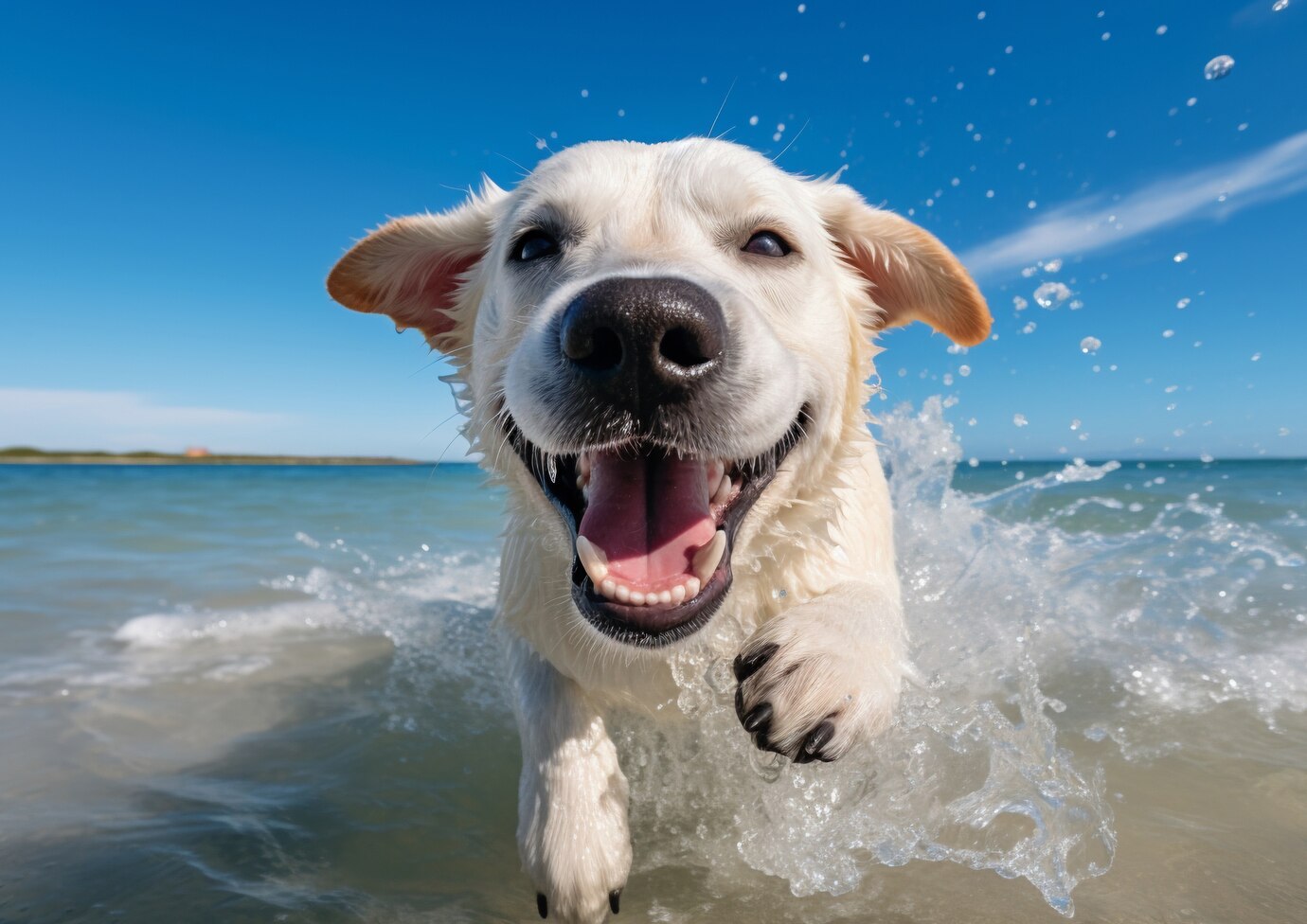



Get involved!
Comments